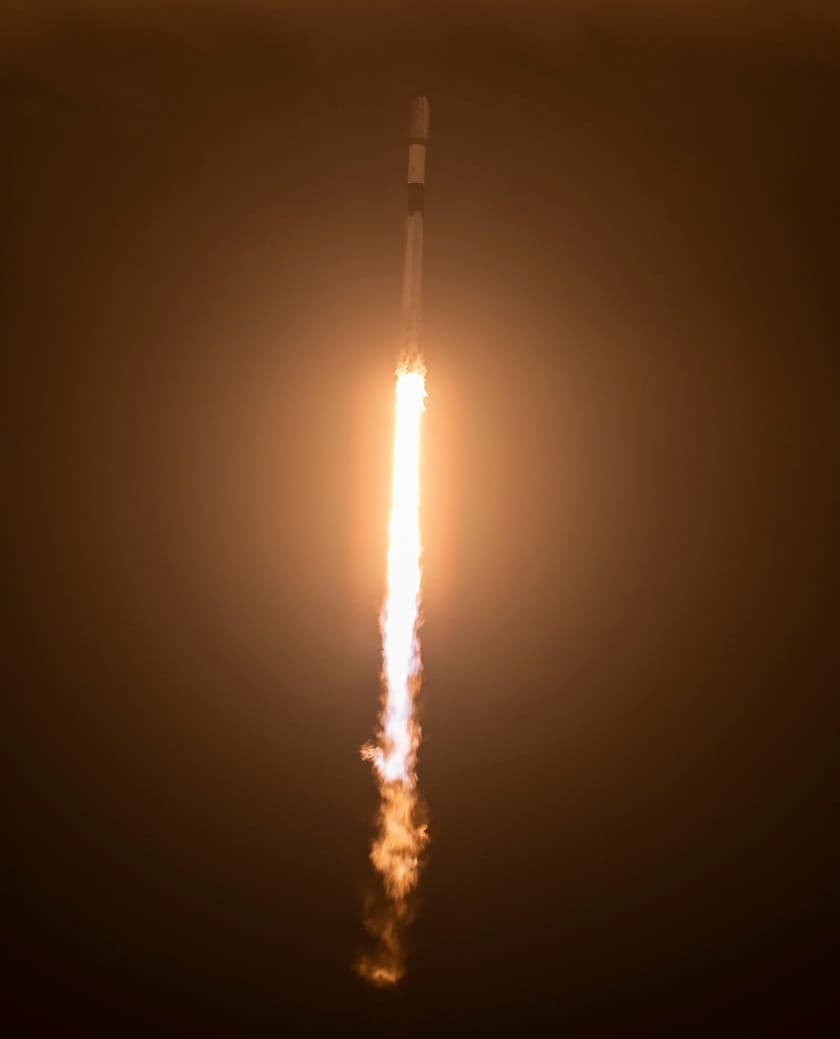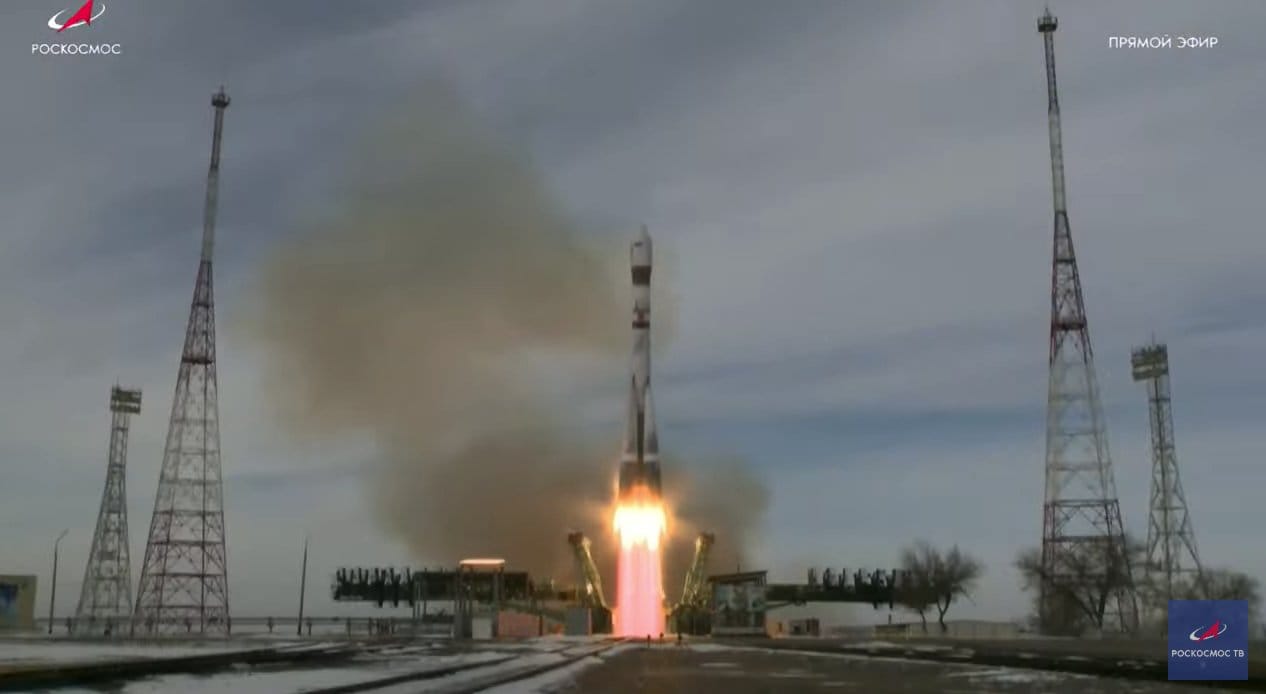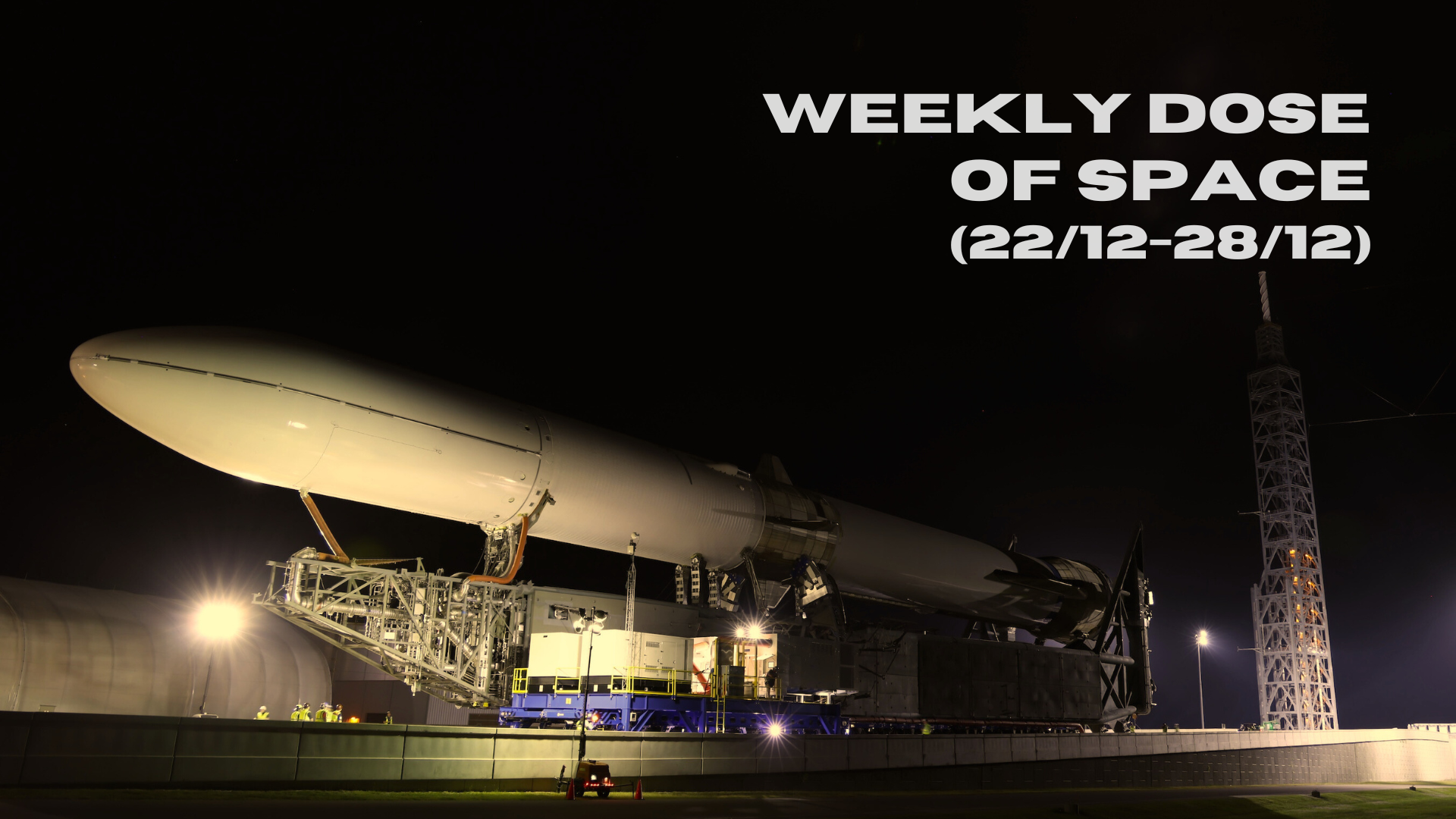Table of Contents
Welcome back to Weekly Dose of Space! This week had three launches occur, with sadly one failure. News this week had New Glenn eagerly approaching launch along with the Parker Solar Probe passing incredibly close to the Sun. As always, we'll also look ahead to what the worldwide launch schedule might look like next week.
SpaceX
This week at Starbase began on December 22nd when what is believed to be Booster 14's hot-staging ring was rolled out from Starbase's factory and parked outside of the 'mega bays'. The next day this hot-staging ring was moved into the smaller of the two 'mega bays'.
After a few days of limited activity over Christmas, Ship 35's Starlink 'Pez' dispenser and nose section was moved into the larger 'mega bay' for stacking on December 26th. Ship 35 could be the third 'Block 2' Starship upper-stage and may fly for Starship-Super Heavy's ninth flight test.
The next day, December 27th, had Booster 15 undergoing cryogenic testing at the Massey's test site. This testing had the methane tank fully loaded over the course of a couple hours. A repeat of Booster 15's cryogenic testing also occurred on December 28th.
Launches This Week
December 23rd - Falcon 9 with Starlink Group 12-2
SpaceX launched twenty-one Starlink satellites to low Earth orbit atop of a Falcon 9 flying from Launch Complex 39A, in Florida. The booster supporting this mission was B1080, making its fourteenth flight and landing downrange on the drone ship 'Just Read The Instructions'.

December 25th - Soyuz 2.1b with Resurs-P No.5
A Soyuz 2.1b lifted off from the Baikonur Cosmodrome carrying the commercial Earth observation satellite Reusrs-P No.5 into a sun-synchronus orbit. This was also the 2000th launch of an R-7 rocket!

December 27th - Kinetica-1 with eleven satellites
CAS Space's Kinetica-1 rocket blasted off from the Jiuquan Satellite Launch Center planning to carry eleven satellites into orbit. Sadly this launch failed, and was safely terminated, due to an issue three seconds into the third-stage burn.
In Other Space News
New Glenn cleared for flight!
Next stop launch pic.twitter.com/GQFz4XxEt5
— Jeff Bezos (@JeffBezos) December 28, 2024
Blue Origin's New Glenn rocket performing a static fire on December 28th, via Jeff Bezos on X.
On December 27th, Blue Origin received a launch license from the U.S. Federal Aviation Administration to perform the first flight of the company's massive New Glenn rocket. A few hours later in the early hours of December 28th, New Glenn's seven BE-4 engines roared to life for twenty-four seconds burning liquid methane and liquid oxygen for the rockets pre-flight static fire test.
For the static fire, a complete New Glenn vehicle, consisting of the first and second stages as well as a payload test article comprised of manufacturing test demonstrator fairings, a high-capacity fixed adapter flight unit, and a 45,000 pound (20,411 kilogram) payload mass simulator, was on the launch pad according to Blue Origin. Following the static fire, Senior Vice President of New Glenn, Jarret Jones, said:
“This is a monumental milestone and a glimpse of what’s just around the corner for New Glenn’s first launch,” – “Today’s success proves that our rigorous approach to testing–combined with our incredible tooling and design engineering–is working as intended.”
Previous tests ahead of launch over the past few weeks included a tanking test, tests of the flight computers' ability to handle the launch countdown, and a full wet dress rehearsal where both stages of the rocket were fully fueled and a launch countdown initiated, stopping just before engine ignition.
Blue Origin has not yet shared a firm date for New Glenn's debut mission but an airspace advisory is present for January 6th, along with a backup opportunity the day after.
Parker Solar Probe makes closest approach to the Sun!
NASA's Parker Solar Probe made its closest approach to the Sun on December 24th, flying just 3.8 million miles above the star's surface at a speed of 430,000 miles per hour! Flying this close to the Sun will allow the spacecraft to conduct unrivaled scientific measurements to further expand our understanding of the universe.
Speaking on the probes closest approach of the Sun, Nour Rawafi, the project scientist for Parker Solar Probe at the Johns Hopkins Applied Physics Laboratory, said:
“Parker Solar Probe is braving one of the most extreme environments in space and exceeding all expectations,” – “This mission is ushering a new golden era of space exploration, bringing us closer than ever to unlocking the Sun’s deepest and most enduring mysteries.”
For passing this close to the Sun, the Parker Solar Probe relies on a carbon foam shield to protect it from the extreme heat in the upper solar atmosphere called the corona, which can exceed 1 million degrees Fahrenheit (555,537 degrees Celsius). The shield was designed to reach temperatures of 2,600 degrees Fahrenheit (1,426 degrees Celsius), hot enough to melt steel, while keeping the instruments behind it cool at room temperature.
Since beginning its mission back in 2018, the Parker Solar Probe has made discoveries across the inner solar system such as showing how coronal mass ejections vacuum up dust as they sweep across the solar system, documenting Venus' natural radio emissions from its atmosphere, and completing the first image of Venus' orbital dust ring.
What to Expect Next Week
Starbase
SpaceX is currently preparing to perform Starship-Super Heavy's seventh flight test utilizing Booster 14 and Ship 33, the first 'Block 2' Starship upper-stage. This launch may take place no earlier than January 10th, the U.S. Federal Aviation Administration has also recently granted a launch license for the mission. Both vehicles needed for flight have also completed pre-launch static fires and individual tests.
December 29th - Falcon 9 with Starlink Group 11-3
A Falcon 9 is set to liftoff from Space Launch Complex 4E, in California, carrying a batch of Starlink satellites into low Earth orbit.
December 29th - Falcon 9 with Astranis MicroGEO satellites
SpaceX is expecting to launch Falcon 9 from Space Launch Complex 40, in Florida, carrying four of Astranis' MicroGEO communications satellites into a geostationary transfer orbit.
December 30th - Falcon 9 with Starlink Group 12-6
Another Falcon 9 is expected to launch from Launch Complex 39A carrying another batch of Starlink satellites to low Earth orbit.
December 30th - PSLV with SPADEX
A Polar Satellite Launch Vehicle is expected to launch the SPADEX, Space Docking Experiment, to low Earth orbit. The mission will demonstrate autonomous docking between two satellites, a capability India is yet to perform ahead of its future lunar and human spaceflight missions.
January 2nd - Falcon 9 with Thuraya 4-NGS
Yet another Falcon 9 is expected to launch from Space Launch Complex 40 carrying the Thuraya 4-NGS communications satellite to a geostationary transfer orbit on behalf of UAE-based Al Yah Satellite Communications.







